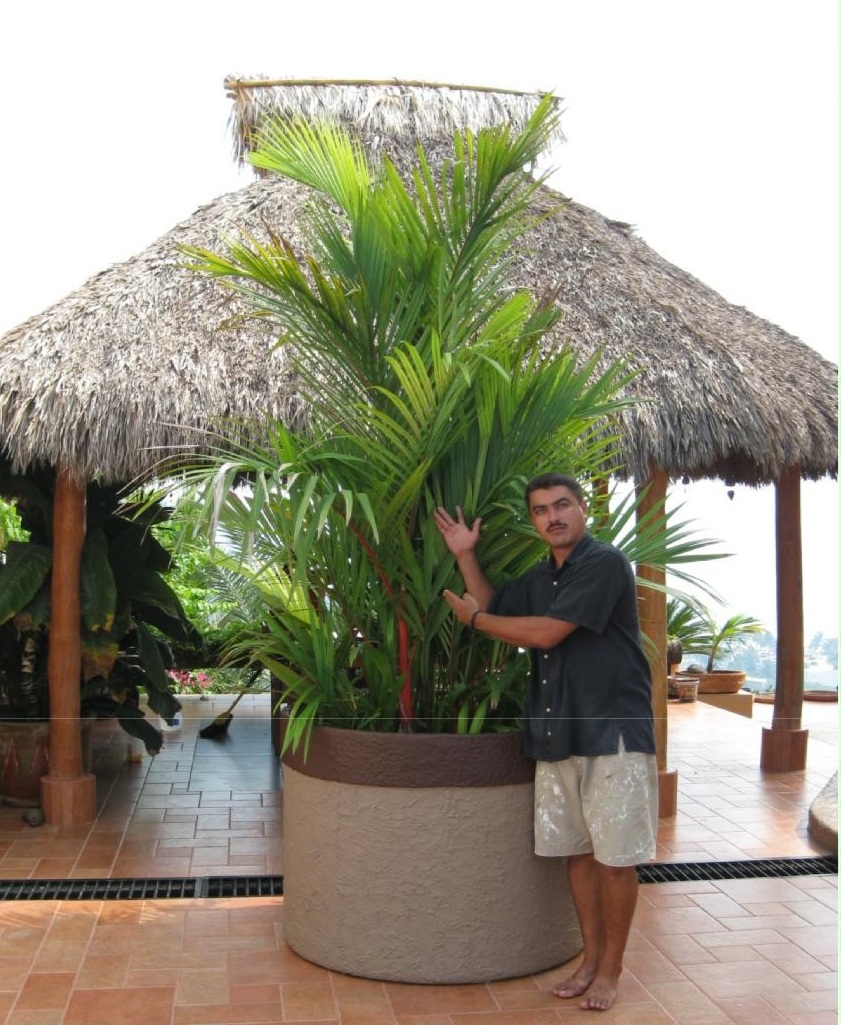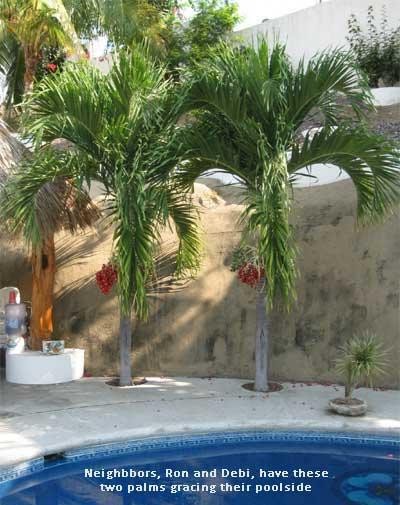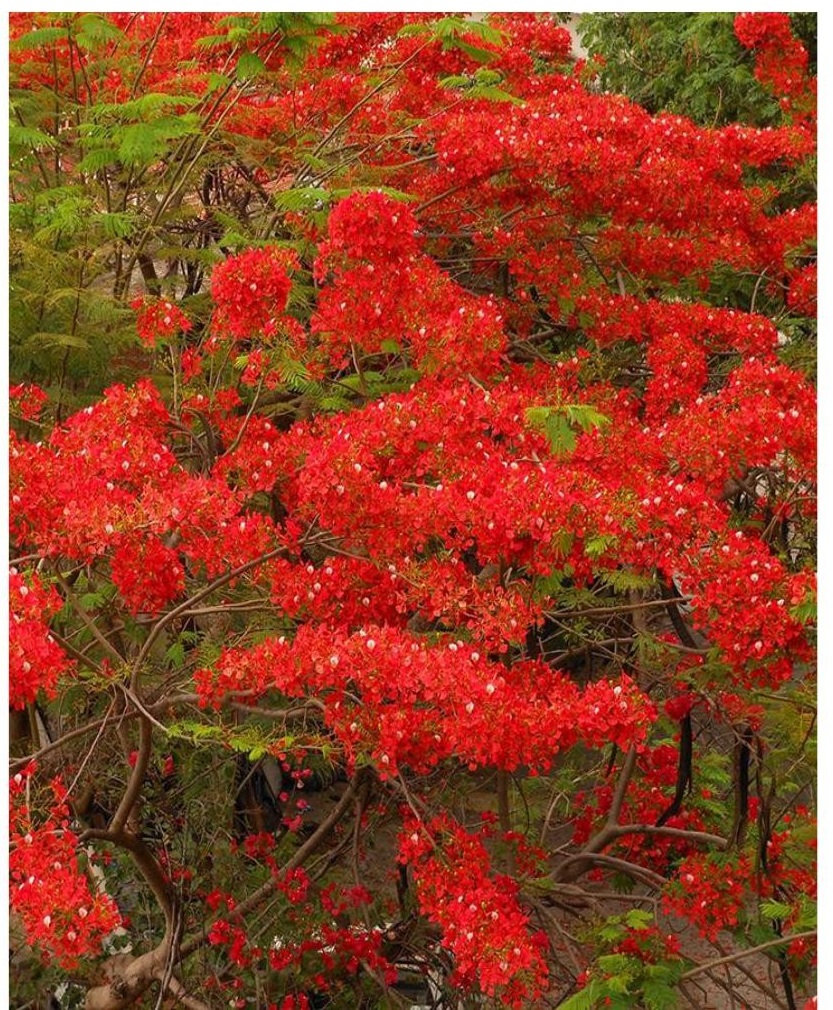By Tommy Clarkson from the February 2010 Edition
Lipstick Palm, Cyrtostachys renda (or lakka)
Family: Areceae; Sub Family: Arecoideae; Tribe: Arecaceae Also called: Red Sealing Wax Palm, Sealing Wax Palm or Rajah Palm.
Above this palm’s graceful, slender gray to light brown trunks are eye catching scarlet red to orange-red, three foot long, crownshafts. Simply glorious in appearance these colors are among the rarest colors found in any palm trunks. This short, clustering palm is the proverbial “show stopping, eye popping, wowie-kazowie looker”!
Its scientific name is derived from the Greek word “Kyrtos” which means “curved” and “stachys” meaning “ear of grain” that describes the curved inflorescence. Beyond the obvious lipstick coloration of the crowshaft, appropriately, one of its other common names, Red Sealing Wax Palm, comes from its very similar color to Chinese sealing wax.
The genus consists of eight to nine varieties originating in the coastal swamps and forests of Malyasia, Indonesia, Borneo, Sumatra, the Solomon Islands and Southern Thailand and can live up to 80 years. In those wild environs, this exquisite, thin trunked, feathering palm can grow to a height exceeding thirty feet but as a domesticated palm it grow to but half that height. Above the colorful crownshafts, its pinnate (feather shaped), green to light yellow-green, leaves, around four feet in length, are gracefully arched.
Be aware, however, that this beauty does not care for drying winds, may become damag-ed, and even killed, if the temperature drops below 40 degrees Fahrenheit and handles drought not at all. As regards this palm disliking cold, there are some who say that there is a fungus Gliocadium that may reside on it and which becomes active when the temperature drops below 70 degrees. Such being the case it is recommended that a fungicide be applied late in November or December (even here in Mexico) just in case.
In addition to loving make that needing water and high humidity, it prefers direct sun. However, it can handle some shade though rich, moist, humusy, and well drained soil is a must. Inasmuch as they grew naturally in swamps they can even grow in standing water.
With a tendency to clump next to each other it is similar to a Bamboo Palm and great for screening areas. They are also beautiful on patios and around swimming pools.

It is a slow grower with young plants sometimes remaining but a few inches tall for up to three years though such has not been the case with ours, growing most profusely in our entry terrace. It should receive monthly feedings of tropical plant food (we also regularly throw on dried cow manure) and is best propagated by carefully dividing the root clusters as its seeds are very slow to germinate taking from three months to a year to germinate.
It has no major pest or disease problems. It is monoecios which means that the pollen and ovules come from separate flowers on the same tree and pollinates itself.
Because of their rarity and slow growing nature these stunners are generally quite costly . . . but, as any who owns, or has seen, these will attest, they are well worth it!
Tommy enthusiastically grows exotic palms, plants and flora in both the Puerto Vallarta and Manzanillo areas. For advice, information or a tour of his gardens please e- mail: olabrisa@gmail.com
Download the full edition or view it online
—
Tommy Clarkson is a bit of a renaissance man. He’s lived and worked in locales as disparate as the 1.2 square mile island of Kwajalein to war-torn Iraq, from aboard he and Patty’s boat berthed out of Sea Bright, NJ to Thailand, Germany, Hawaii and Viet Nam; He’s taught classes and courses on creative writing and mass communications from the elementary grades to graduate level; He’s spoken to a wide array of meetings, conferences and assemblages on topics as varied as Buddhism, strategic marketing and tropical plants; In the latter category he and Patty’s recently book, “The Civilized Jungle” – written for the lay gardener – has been heralded as “the best tropical plant book in the last ten years”; And, according to Trip Advisor, their spectacular tropical creation – Ola Brisa Gardens – is the “Number One Tour destination in Manzanillo”.




You must be logged in to post a comment.